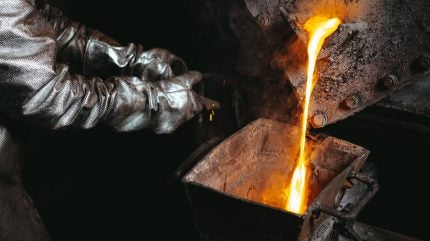
Greenland-based mining company Amaroq has discovered conventional rare earth element (REE) bearing mineralisation within the Nunarsuit mineral licence area in South Greenland.
Amaroq said the discovery marks its first confirmed high-grade REE occurrence and signifies a strategic move into the REE and critical minerals sector.
Discover B2B Marketing That Performs
Combine business intelligence and editorial excellence to reach engaged professionals across 36 leading media platforms.
The Nunarsuit licence forms part of the Gardaq ApS joint venture (JV) operated by Amaroq.
The Ilua pegmatite zone on the Nunarsuit licence has been confirmed to host REE mineralisation, with grades reaching up to 2.31% total rare earth oxide (TREO).
The Ilua pegmatite zone is situated in the Gardar igneous province of South Greenland, which, according to the European Commission’s Joint Research Centre, contains up to 20% of global REE resources and is home to other known REE deposits including Kvanefjeld and Tanbreez.
Assay results from the Ilua pegmatite zone indicate an average composition of 27% heavy and 73% light REEs, with 21% comprising key magnet metals including neodymium, praseodymium, dysprosium and terbium.
Amaroq exploration VP James Gilbertson said: “The confirmation of high grade REEs on our licence area is very good news and we are extremely encouraged by these initial results, which marks the first entry of Amaroq into the REE space in Greenland.
“The fact that the REE mineralisation appears to be hosted in low uranium, ‘traditional’ minerology is particularly encouraging; Amaroq believe that the host is likely to be a well-understood rare earth ore mineral monazite that typically lends itself to conventional extraction and processing techniques.”
Initial fieldwork suggests the presence of an extensive REE-bearing pegmatite system that warrants further exploration and evaluation.
The outcrop at Ilua is several metres wide and stretches for approximately 5km in strike length.
Amaroq also cited the potential existence of multiple parallel structures in the area, which the company plans to assess during the 2026 exploration season.
The pegmatite systems appear to be predominantly hosted within monazite mineralogy, which may allow for more straightforward and conventional REE processing compared to more complex mineralogy found elsewhere in South Greenland.
Additionally, the average assay results received are below the current government threshold for uranium.
Amaroq’s technical team will continue their assessments with the aim of conducting a scout drilling campaign as early as spring 2026 to test the volumetrics of the prospect.
Further results from Amaroq’s 2025 non-gold exploration campaign are expected to be released in due course.
Gilbertson added: “This potential discovery builds on our expertise in defining resources and mine development in the region, while diversifying into critical minerals at a time of rising global demand for these resources.
“Our team is looking forward to unlocking the full value of this potential discovery with further work and scout drilling in 2026, and we are optimistic that Nunarsuit’s rare earth potential could add significant shareholder value alongside our existing projects.”
In July 2024, Amaroq received approval from the Government of Greenland for the environmental and social impact assessments for its Nalunaq project.
Sign up for our daily news round-up!
Give your business an edge with our leading industry insights.
Mining Technology Excellence Awards – The Benefits of Entering
Gain the recognition you deserve! The Mining Technology Excellence Awards celebrate innovation, leadership, and impact. By entering, you showcase your achievements, elevate your industry profile, and position yourself among top leaders driving industry advancements. Don’t miss your chance to stand out—submit your entry today!




